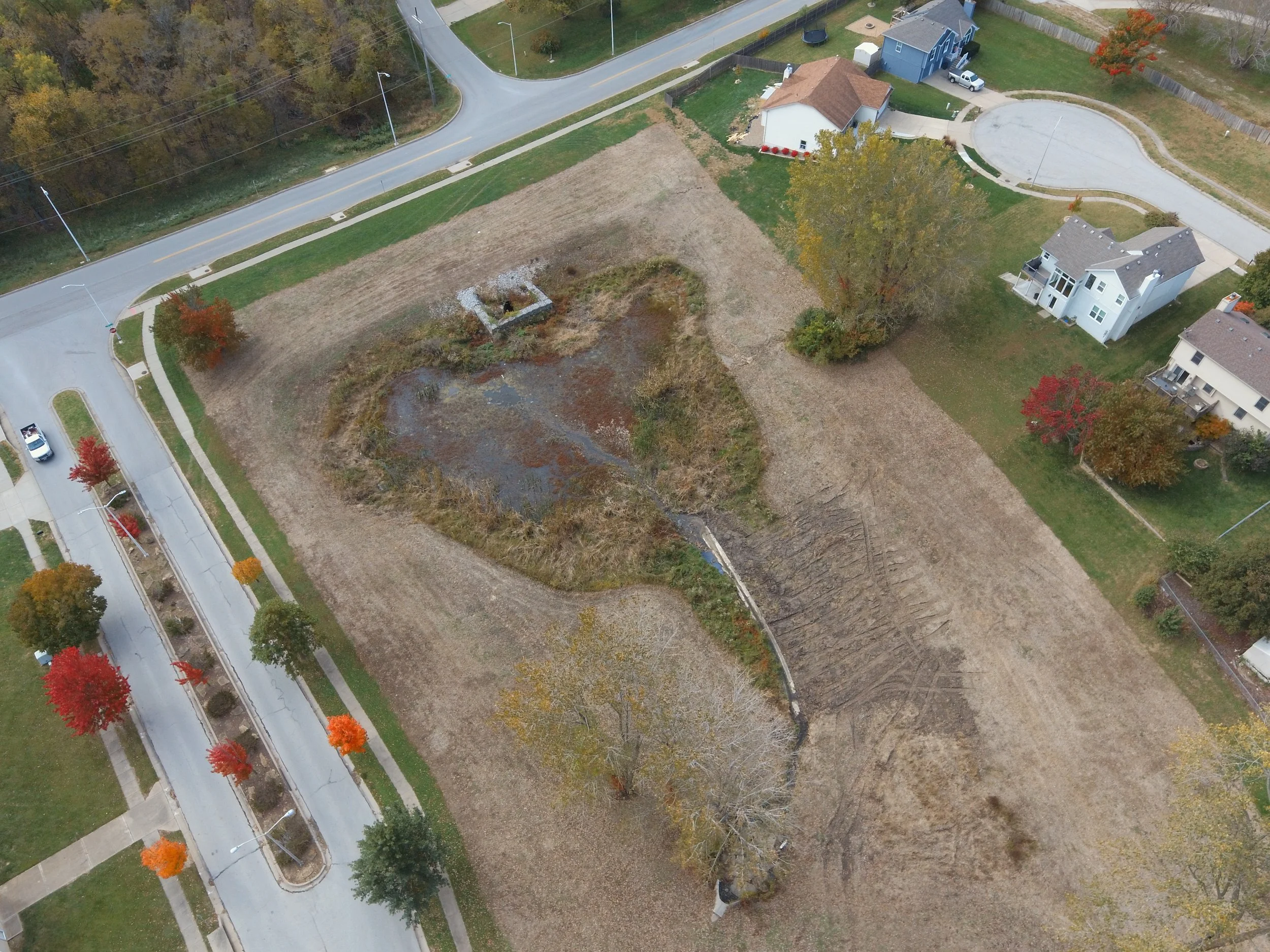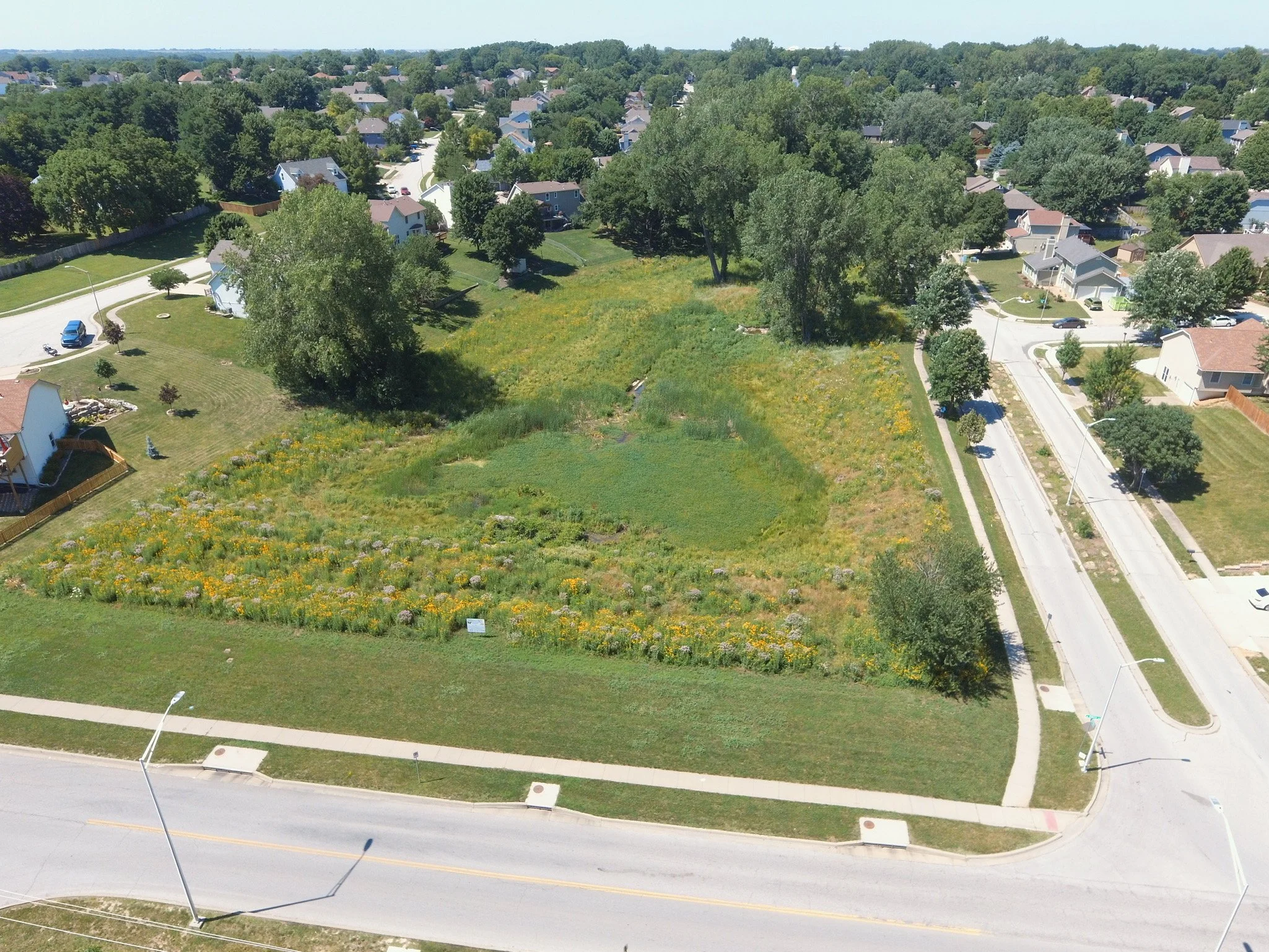Wildwood West before and after conservation efforts.
Bob Borman is a suburban homeowner, a rural landowner, a hunter and a self-driven conservation enthusiast. That combination led him to begin using the expertise and financial assistance from conservation programs to make both his rural property in northwest Missouri and green space near his home in Weatherby Lake more wildlife friendly and scenic.
Borman is tapping into the type of help that is available from the Missouri Department of Conservation (MDC), the USDA, and private conservation programs. Small acreages and large farms can both benefit from land management practices that enhance the health of the land and habitat for wildlife.
Bob Borman
Borman’s love of the natural world was born exploring nature during a childhood in Minnesota, helping on his grandfather’s farm, and sharing the outdoors with a father and grandfather who taught him how to duck hunt. After moving to Missouri, he was introduced to quail hunting. That led Borman to knocking on doors in northwest Missouri seeking permission to hunt. He found places to hunt and eventually acquired property in the Kingston area.
From the 1980s into the early 2000s, Borman’s passion for quail hunting led him afield and he had good success. In that time, 8 to 10 quail coveys were easily accessible to him on land he owned or where he had permission to hunt. Then he started to see a drastic decline in coveys.
“So, I asked myself, what is happening?” Borman said.
The Missouri landscape is changing. Bobwhite quail need good nesting, brood rearing, and overwintering habitat, and that is in decline in rural areas. There is less good quality grassland with varied plant structure usable for quail. Land is being sold and divided into acreages and new homes built as older farming generations retire. Some new property owners enjoy wildlife, but they are not familiar with what makes good habitat for wildlife.
One problem for grassland birds like quail and other wildlife is that increasingly, in rural Missouri and on the city outskirts, all the land surrounding 10- to 20-acre homesteads is being taken care of like a giant city lawn. Acres of monoculture grass are being manicured with frequent mowing. Ninety percent of land in Missouri is privately owned, so each land management change of that type by a new owner adds up to a large change in the environment.
Borman, however, has done a wonderful job in creating healthier, wildlife-friendly practices in suburban and rural places.
“Instead of mowing, mowing, mowing, let’s plant it,” Borman said of manicured acreages.
Mowing acreages is expensive due to fuel cost and maintenance of equipment. It’s also time-consuming. A close-cropped grass has little value to wildlife. Ground nesting birds like wild turkeys and quail are suffering for lack of usable habitat. The lack of native wildflowers and grasses are hurting pollinator species such as bees and butterflies, too. Mowed monocultures do little to benefit soil health.
There’s a healthier approach, Borman said. MDC and conservation partners can provide guidance and often financial incentives such as cost-share grants can make good management practices affordable.
Money and expertise available for pollinator plantings with native wildflowers and grasses prompted Borman to help establish a native plant community on a suburban water retention basin at 10105 N.W. Barry Road. An MDC community conservation team helped with the planning and cost-share grants. The project is in Kansas City but helps keep sediment from washing into nearby Weatherby Lake. The wildflower plantings also made the project more scenic and wildlife friendly for songbirds and butterflies.
“It acts like a giant sponge now,” he said about the native planting in the retention basin near his property.
Borman has also done timber stand improvement that’s boosted walnut tree growth on a 40-acre tract in rural Missouri.
“Anyone can do it,” Borman said. “You don’t have to have 40 acres or 80 acres, you could have just three or four acres.”
Whether you just want help identifying what types of plants and trees are on your property, or you want to make a conservation plan for improvements, professionals are available to help. Contact your local MDC or Natural Resources Conservation Service (NRCS) office to learn more about your options.
Healthy land management is good for everyone, Borman said. “Let’s help ourselves and help our beautiful Missouri while we do it.”
Cassandra Messer is a private land conservationist for the Missouri Department of Conservation. She can be reached at 816-431-2101, ext. 3098, or Cassandra.Messer@mdc.mo.gov.




